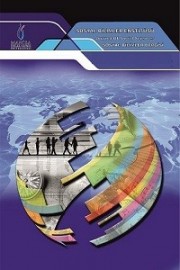REEXAMINATION OF LUCAS PARADOX: GRAVITY MODEL APPROACH FOR BRICS COUNTRIES
REEXAMINATION OF LUCAS PARADOX: GRAVITY MODEL APPROACH FOR BRICS COUNTRIES
Author(s): Harun Bal, Emrah Eray Akça, İpek Tekin, Mina Mahjoub LalehSubject(s): International relations/trade, Economic development, Financial Markets
Published by: Celal Bayar Üniversitesi Sosyal Bilimler Enstitüsü
Keywords: Capital Movements; Foreign Direct Investments; Lucas Paradox; Gravity Model; BRICS;
Summary/Abstract: Although the neo-classical theory argues that capital should flow from developed countries to the developing countries until the marginal return of investment among countries is equalized, Lucas (1990) reached the conclusion that such capital flows have not occurred from US to India even though the marginal return of capital in India is about 58 times that of US. Lucas explained this paradoxical finding as of stemming from primarily human capital differences, external benefits of human capital and capital market imperfections. Lucas’s paradoxical findings brought intense debates with it on the subject and led to researches on other determinants of capital flows. In accordance with these discussions, our study questioned the existence of Lucas Paradox for BRICS countries (Brazil, Russia, India, China, South Africa) using panel data for 2002-2014 period. Findings obtained from the Augmented-Gravity model confirm the existence of Lucas Paradox in BRICS countries. In other words, marginal return of capital is not an important determinant of capital inflows towards BRICS countries. The general conclusions of the study show that capital inflows depend on institutional quality, agglomeration effect, trade openness degree, exchange rate and volatility of inflation.
Journal: Celal Bayar Üniversitesi Sosyal Bilimler Dergisi
- Issue Year: 17/2019
- Issue No: 02
- Page Range: 267-291
- Page Count: 25
- Language: English

